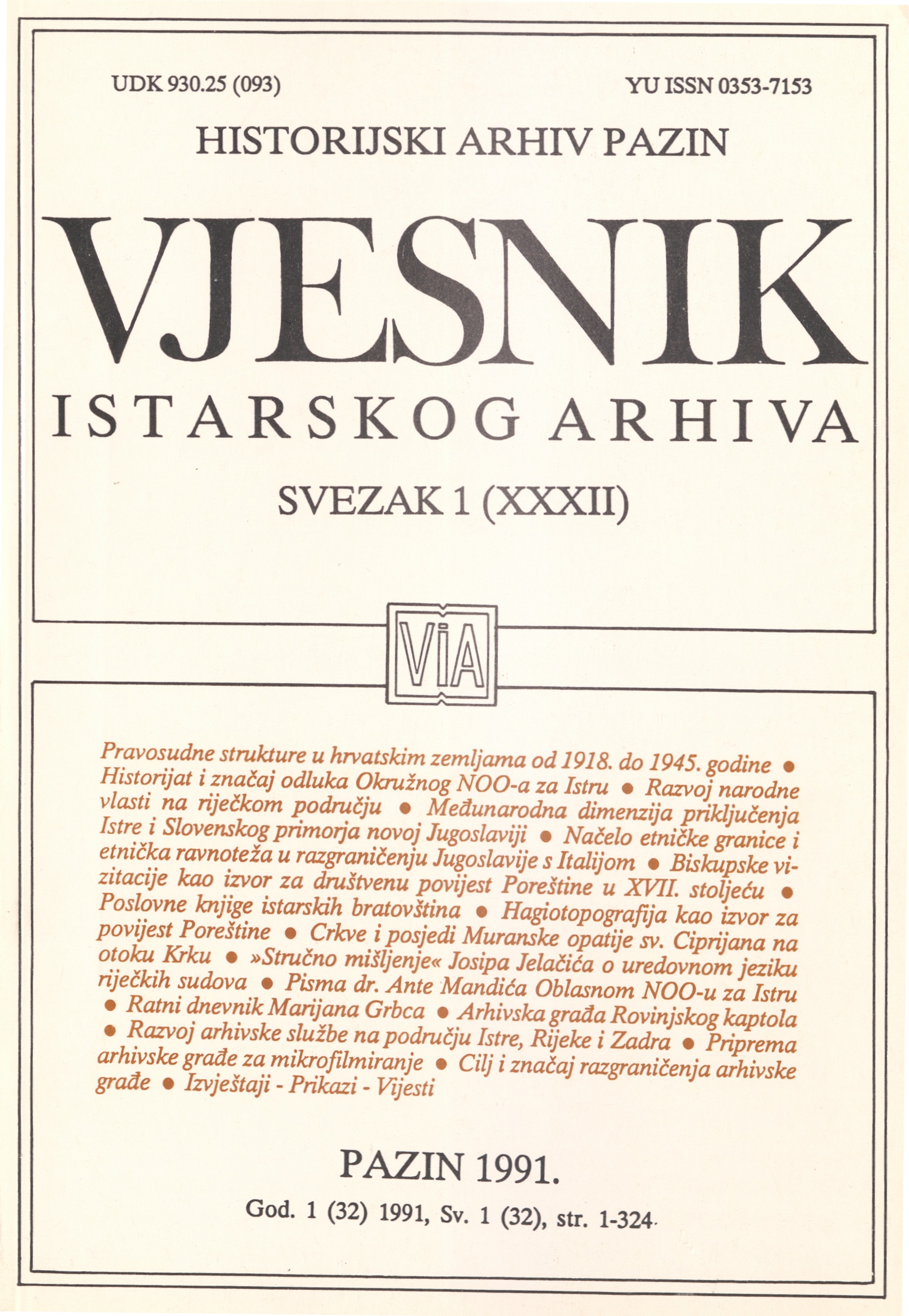Hagiotopography as a Source for the History of the Poreč Area
Abstract
Using the Poreč area as an example, the author draws attention to the importance of hagiotopography (the frequency in a given area of buildings dedicated to a saint or deity as the patron of a certain place or of a certain domain of human life or activity) for the history of a certain area. For example, foreign political powers often attempted to implement their influence through »their« (the foreign power’s) deities and saints, while the native population persisted in keeping up the cult of »their« (the native population’s) saints as a sign of revolt against foreigners; the density of churches in a given area is an expression not only of the religious feelings of people but also of the economic power of the community or of individuals; churches dedicated to saints who are »helpers in adversity« speak of sufferings and misfortunes, and of the psychological states of individuals and groups - thus, observing the directions in which churches dedicated to St. Roch, protector from the plague, were built, one could reconstruct approximately the main directions in which this disease spread. A list of churches and shrines in the Poreč area is provided (in alphabetical order, according to the names of patron saints), and for each of these mention is made of the location on which it stands (by parish), the time it was built (by stylistic period), and the domain of patronage and/or »political influence«, i.e. the place from which the cult came to this area. E.g.: St. Lawrence; Vižinada; Early Christian; Roman; fire, lumbago. An analysis is then made of each of the periods (Early Christian, Pre-Romanesque, Romanesque, Gothic and Renaissance, Baroque); which saints appear most frequently in a certain period, in which places, the intensity with which churches were built, etc., up to the stagnation and falling into ruin of churches already built (late 18th and early 19th century) due to the policies of Venice and Austria (Enlightenment) and the abolition of guilds.
Downloads
Published
Issue
Section
License

This work is licensed under a Creative Commons Attribution-NonCommercial 4.0 International License.

